Andrew Paul Wood – 22 November, 2009
A set of specimen draws is transformed into a cross between Mary Kelly’s Post-Partum Document and a minimalist grid by Donald Judd.
Newly arrived and totally ignorant of the Levantine languages, Marco Polo could express himself … with objects he took from his knapsack – ostrich plumes, pea-shooters, quartzes – which he arranged in front of him like chessmen. …one city was depicted by the leap of a fish escaping the cormorant’s beak to fall into a net; another city by a naked man running through fire unscorched; a third by a skull, its teeth green with mould, clenching a round, white pearl. The Great Khan deciphered the signs, but the connection between them and the places visited remained uncertain; he never knew whether Marco wished to enact an adventure that had befallen him on his journey, an exploit of the city’s founder, the prophecy of an astrologer, a rebus or a charade to indicate a name. But, obscure or obvious as it might be, everything Marco displayed had the power of emblems, which, once seen, cannot be forgotten or confused. In the Khan’s mind the empire was reflected in a desert of labile and interchangeable data, like grains of sand, from which there appeared, for each city and province, the figures evoked by the Venetian’s logogriphs. … Perhaps, Kublai thought, the empire is nothing but a zodiac of the mind’s phantasms.
“On the day when I know all the emblems,” he asked Marco, “shall I be able to possess my empire, at last?”
And the Venetian answered: “Sire, do not believe it. On that day you will be an emblem among emblems.” - Italo Calvino, Invisible Cities (1983)
In 2008, as I was wandering the hinterlands of Lower Saxony in the northernmost part of Germany, in the chocolate-box exquisite town of Oldenburg I happened to visit the local museum of natural history. I wanted to gape at preserved bog men and touch base with the bronze age roots of my Pakeha-ness. One room was done out to represent a nineteenth century zoological display, and quite unexpectedly I came eye to eye with three rather forlorn looking stuffed kiwi. I had a sudden pang of home-sickness and identification – I felt very far from home, exotic and somewhat on display. Suddenly being a New Zealander felt concrete for me. The museum’s records revealed nothing of how they came to be there, just the ornithologist’s names, the Linnean Latin and that they came from “Neu-Seeland” in the nineteenth century, but I bring up the story because I get the exact same sensation when looking at Neil Pardington’s exhibition The Vault at Christchurch Art Gallery.
Pardington and his sister Fiona are easily among the most important photographers working in New Zealand today. The images in The Vault are documentary in that they record museum storage areas around the country, much as an earlier series surveyed hospital surgeries. The repetition and archiving are an important artistic strategy – one thinks of the Bechers’ water tower photographs and Warhol’s endless Maos and Marilyns – but beyond that Pardington’s images are rich with mystery and even melancholy. The richness and diversity of colours and textures, and the neat ranked order of things carefully placed seduce the eye. We wonder about the stories behind these boxed and tagged objects (which quite likely have never been on public display).
Museum stores are liminal spaces; unfettered of the need to educate or appeal to an audience, they are beholden only to the economy of space, conservation and efficient retrieval. In essence, we might even describe Pardington’s large, beautiful images are meta-diagrams of Aristotle’s cataloguing and ordering philosophy stripped of the trappings of display. And yet, they are on display in the form of the photographs – the line between display space and back of house is irrevocably blurred, even inverted. The photographs make the racks and boxes exclusively aesthetic – we don’t have to know anything about the habitat of the dead seagulls (forming the sort of “symphony in grey” that would have appealed to Whistler) or the precise ethnographical meaning of the Samoan clubs (perhaps with the faintest suggestion of his sister Fiona’s evocative photographs of Maori taonga), we’re just here for the colours and forms (all masterfully handled). A set of specimen draws is transformed into a cross between Mary Kelly’s Post-Partum Document and a minimalist grid by Donald Judd.
Storage, is by its very nature, a minimalist grid, but the artifacts and fauna stored therein are baroque and luscious and this paradoxical juxtaposition lends an aesthetic frisson to the whole endeavor that was perhaps lacking in the starker images of hospital operating theatres of a few years ago.
More often than not the photographs are testament to the Victorian obsession for collecting and imperial acquisition (the sort of thing that makes modern collections managers twitch for a good de-accessioning). Each image is fundamentally a Wunderkammer (cabinet of curiosities) by proxy, and en masse make me slightly giddy. The vast gallery space becomes a cathedral of curiosities. At the same time there is this delicious frisson of something usually private and unseen made public in a very visual way. Any of these could prove a Proustian Madeleine to trigger a cascade of tiered reverie and semiotic free association of the sort we pointy-headed types are fond of. Indeed, I am reminded of something Proust on the painter Chardin: “Until I saw Chardin’s paintings I never realised how much beauty lay around me in my parents’ house, in the half-cleared table, in the corner of a table-cloth left awry, in the knife beside the empty oyster-shell”. The photographs are the still life equivalent of a found poem or an objet trouvé.
We feel that we are being let in on a secret, a sort of Eleusinian mystery. The act of viewing takes on a slightly sacramental quality and the gallery space does indeed become cathedral like, full of reliquaries; or even slightly tomb-like with the viewer in the position of the archaeologist seeing what has been hidden from public view for centuries.
I have to say I am very much a fan.
(The images above have been sampled from Neil Pardington’s The Vault page on his website. They are not necessarily included amongst his 35 images selected for Christchurch.)
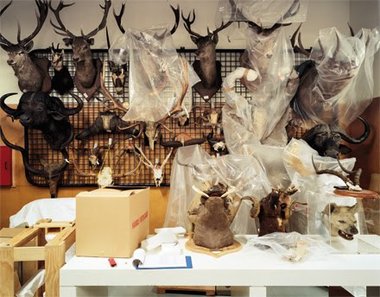


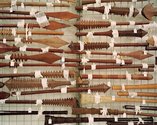
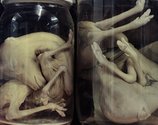
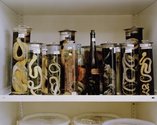
 Two Rooms presents a program of residencies and projects
Two Rooms presents a program of residencies and projects Advertising in this column
Advertising in this column


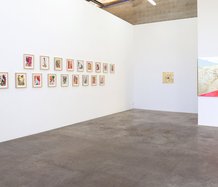
This Discussion has 0 comments.
Comment
Participate
Register to Participate.
Sign in
Sign in to an existing account.